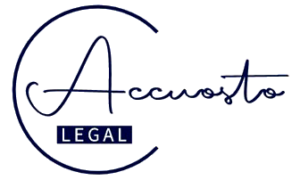This article is an overview of IP rights arising in the results of university investigations. The first part of the article highlights the rights of university researchers in certain countries. The final part will focus on IP contracts and the existing challenges in this area.

- Different scenarios.
Depending on a country´s particular legislation and regulations the situation in respect of research staff’s rights of ownership of Intellectual Property in universities and Public Centres of Investigation can vary substantially.
So, although particular details can vary greatly, we can distinguish two main groups: the countries that consider the commonly known “professor privilege” where the professor/researcher has ownership rights tothe research results and those countries where these rights belong to the university/Public Research Centre where the research was carried out or rights ownership is assigned by law to the particular university or Public Research Centre.
We can mention countries like Finland, Italy or Sweden as examples of the first group and in the second group there are countries such as the United States, whose regulations deserve a separate mention, and most of the European countries included in the OECD study 2003(for example, Germany, Austria, Belgium, Denmark, Spain, France, Holland, Ireland, Norway, Poland and the United Kingdom).
1.1. The United States and the Bayh-Dole Act
Previous to this Act, there was no government policy relating to the ownership of inventions made by contractors and beneficiaries of Government subsidies/grants. In the majority of cases, the Government maintained ownership rights and made them available through non-exclusive licences to whoever might want to exploit them. This procedure meant that the Government had no success in trying to attract private industry to license the inventions of government ownership.
With the legislation commonly known as the Bayh-Dole Act, the universities were allowed to choose the ownership of inventions arising from publicly fundedresearch and becamedirectly involved in the commercialisationprocess of these inventions. In this way, the universities immediately began to develop and strengthen the internal skills necessary to patent and license the inventions created by their research staff , and so the institutions that had not been very active in this area started to create new technology transfer offices.
1.2. Other examples
– Spain: The Sustainable Economy Act and the Science Act
The section of the Act concerning Science and innovation establishes that public universities and Public Research Centres are owners of their researchersresearch results as a result of the fulfilment of their obligations. These Universities and Public Research Centres also have the right to protect these results.
-France and Decree no. 2009/645 with regard to management of industrial property resultsbetween public bodies derived from research conducted by civil servants or public bodies
General regulations concerning Intellectual Property in France is determined by the Intellectual Property Code, and this establishes that when dealing with a case of joint ownership, the joint owners must designate, by common agreement, a joint representative to represent them before the National Institute of Industrial Property (INPI). However Decree 2009/645, in respect of joint research units, states that instead the ‘host’ organisation, whoever it is, will manage the results of the industrial property generated and their exploitation.
- Legal status of researchers
We encounter different situations in respect to the statutory ruling applicable to researchers, depending on whether they are public employees, university professors, employees with work contracts, or whether it is a case of contracts established between the university/Public Research Centre and Foundations or private companies.
Initially, and depending on the the type of relationship existing between research staff and the university/Public Research Centre, we should refer to one legislation or another to determine what happens with the research resultsof intellectual property generated within the relationship. Depending on the particular country, these rules can be included in specific legislation related to science and innovation produced in public bodies, labour laws, patent laws, etc.
However, it remains advisable that universities and Public Research Centres set out clear policies on intellectual property generated by their staff (the meaning of staff in its widest sense) and that it also statesexpressly what happens with intellectual property rights arising from such relationshipsin specific contracts signed by these individuals and the university or Public Research Centres.
In addition, universities/Public Research Centres often promote co-operation or collaboration agreements with foundations and/or private companies. A contractusually exists then between the university and the particular foundation or private company, where aspects relating to the intellectual property generated are regulated.
- Different sources of research and implications for intellectual property rights.
3.1. University Funded
As we have commented previously, the rules regarding research results ownership produced by university and Public Research Centres depend on the country. There are some countries where “professor privilege” is still current and other countries where legislation establishes that these results are owned, in any event, by the university/Public Research Centres concerned.
3.2. Foundations or private companies funded
Research can be fundedentirely by foundations or private companies with results belonging to the foundation or private company with some type of licence in favour of the university/Public Research Centre or establishing joint ownership of the invention vis a vis.
The research may even by carried out in the university or Public Research Centre but be partially funded by a foundation or private company, sometimes establishing a joint venture or similar model with respect to the results obtained.
3.3. Source of leadership and/or funding
In principle, the normal situation is that the organisation who ‘leads’ (i.e. funds) the research is the owner of the results, although it is not always like this.
It will also depend on the contribution made: there will be cases of joint ownership or cases of ownership assigned to the university/Public Research Centre with the licence awarded to the company who has funded the research. There will even be cases of ownership awarded to the university/Public Research Centre but with royalties from exploitation of the invention being shared, throughlicences, with the body that funded the research.
3.4. And what happens if previous areas of research are assigned to new use at the university? Can these areas be excluded from the conditions concerning “standard” Intellectual Property?
The answer, as always with questions relating to legal issues, is that it depends. Thus, the body that provides the research will have to take accountof where it was carried out and with what facilities, with the aim of determining if there is any kind of ownership over what was contributed and, likewise, must consider how the ‘new university/Public Research Centre’ is going to be involved in future research, and to what extent, so as to determine its role in the ownership of future research.
In any event, to avoid future problemsin such cases,it is good practice to establish a contract where the contributions, the involvement of the ‘previous’ institution/university or researcher or company and the ‘new university’ are clearly stated, as well asthe assignment of intellectual property rights to research results.
(1) In the context of this article, the reference to Intellectual Property should be understood in its broadest sense, thus encompassing industrial property rights and copyright.
(2) OECD: “From research to market, management of intellectual property by public research organisations”, 2003.
Mònica López

